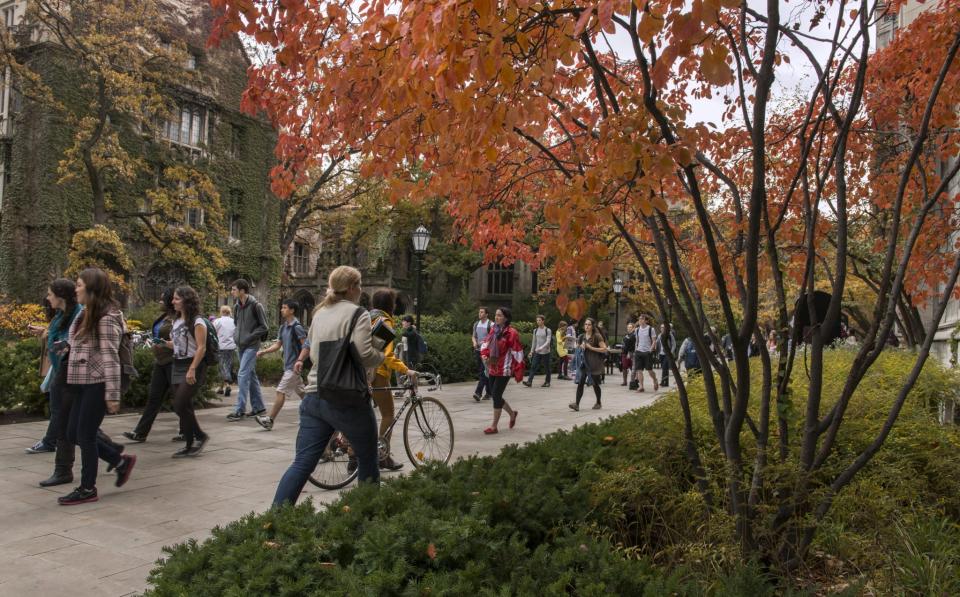Behind the University of Chicago ‘trigger warning’ letter
The online firestorm in response to a letter to incoming freshmen at the University of Chicago, warning them not to expect to be shielded from ideas and words that might make them uncomfortable, does not surprise the man who touched it off. In fact, says John W. Boyer, dean of the college, that response was somewhat the point.
Boyer is also a professor of history at University of Chicago and specializes in the push and pull of intellectual speech. He is the author of a short book on the subject, “Academic Freedom and the Modern University: The Experience of the University of Chicago.” That book (technically a monograph) was sent to every incoming freshman a few days ago in the hope that it would provide context for what has recently become a heated argument on campuses nationwide. And in an accompanying letter, Dean of Students John Ellison made the declaration about “trigger warnings” and “safe spaces” that has gotten so much attention.
“We do not support so-called ‘trigger warnings,’” Ellison wrote. “We do not cancel invited speakers because their topics might prove controversial, and we do not condone the creation of intellectual ‘safe spaces’ where individuals can retreat from ideas and perspectives at odds with their own.”
As Boyer describes it, Ellison’s “was intended as a cover letter asking students to read the book. Instead, the letter is taking on a life of its own.”
Twitter erupted soon after the release of the letter. There was support and a bit of gloating from those who see campuses as becoming too “politically correct” in recent years. There was outrage from sexual assault survivors who felt Ellison was dismissing their trauma, and from critics of racial imbalance on campus, who said it did not protect students of color from hostility.
On the left, New Republic editor Jeet Heer called the letter a “perverse document.”
On the right, the website zerohedge described it as “a refreshing and stark contrast to other universities that have seemingly tripped over themselves to accommodate every silly request from America’s pampered Millennials.”
It is ironic, Boyer says, that those who see trigger warnings as crippling free speech and those who see them as protective of students psyches both believe this is a new debate. It is easy to view it as a modern conundrum, he says, touching as it does on such 21st century nerves as the increased awareness of sexual assault on campus, the perceived trend of overly protective parents, the historical shadows of racism in higher education, and the political rallying cry against political correctness. But the point of his book, he says, and the reason the school wanted students to read it, is that “the questions about academic freedom are as old as university education itself. This goes back to the German universities of the 19th century. It originated in Europe, was adopted by Americans and amplified through the lens of our First Amendment. It’s a perennial issue.”
His research highlights the clash over the decades — during the rise of fascism abroad, McCarthyism at home, protests over the Vietnam War. “Every generation has to confront these issues afresh,” he said.

The latest generation’s version involves such things as: professors at Harvard Law School being asked by students to change the way they teach rape law so as not to trigger survivors of assault; the administration at Princeton University being petitioned to change the name of several buildings because the racist histories of their namesake create microaggressions for members of oppressed cultures on campus; the president of Oberlin College struggling with whether and how to discipline a lecturer for statements that were widely condemned as anti-Semitic; the creation of a “safe space” at Brown University (complete with cookies, coloring books and a video of frolicking puppies) as a refuge for students distressed during a debate about rape on campus; and the “disinvitation” of nine prominent speakers from college graduations in 2014 after students objected to what they might say.
But Boyer said the central question of all these seemingly modern dilemmas is the same as it has been for generations – the right to speak freely vs. the right to feel safe.
He is thinking of adding a chapter to his book, about the newest incarnation of the dilemma, including the response to his university’s latest letter. For now, he says, he hopes students will do as their dean has suggested and read what he’s written. But he stresses this is just a suggestion, not a requirement, because “that would be violating people’s academic freedom I suppose. It’s a free country. It’s not mandatory. I’m not going to test them on it.”


